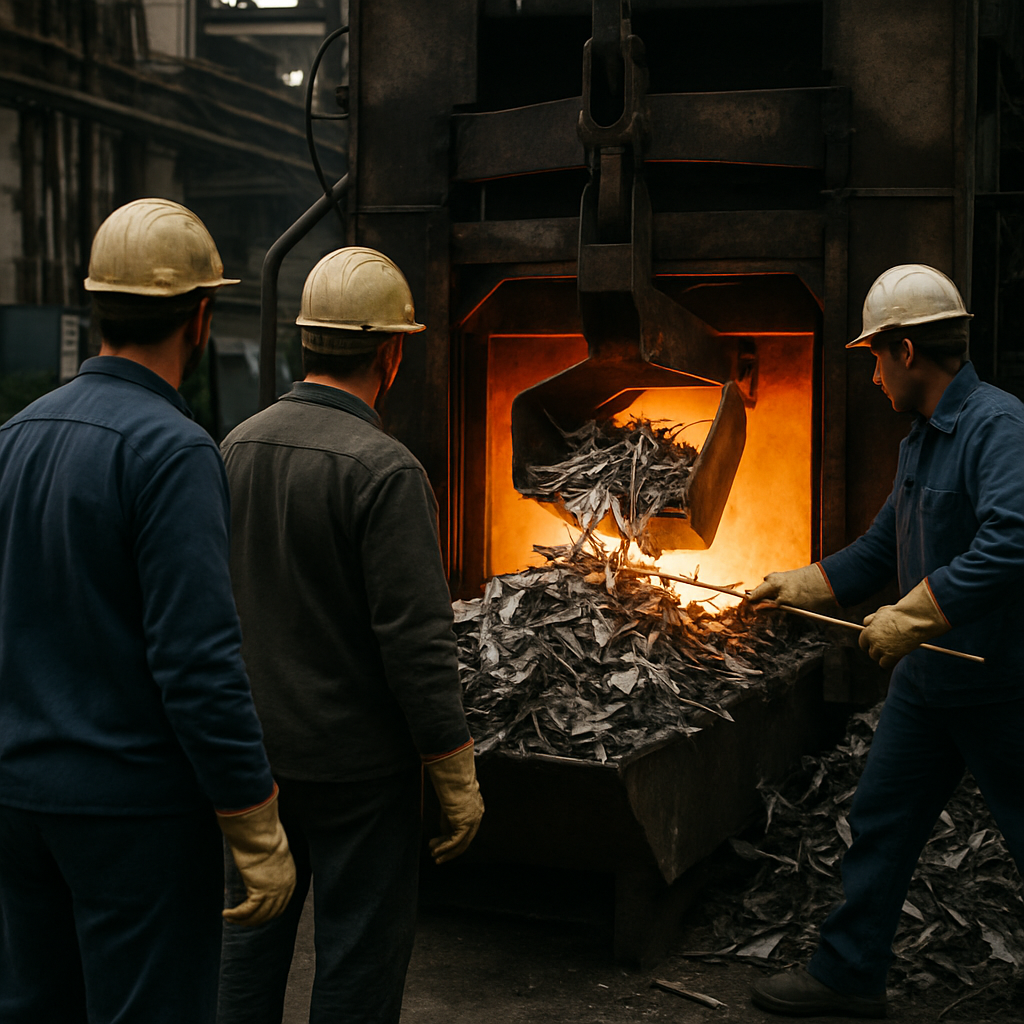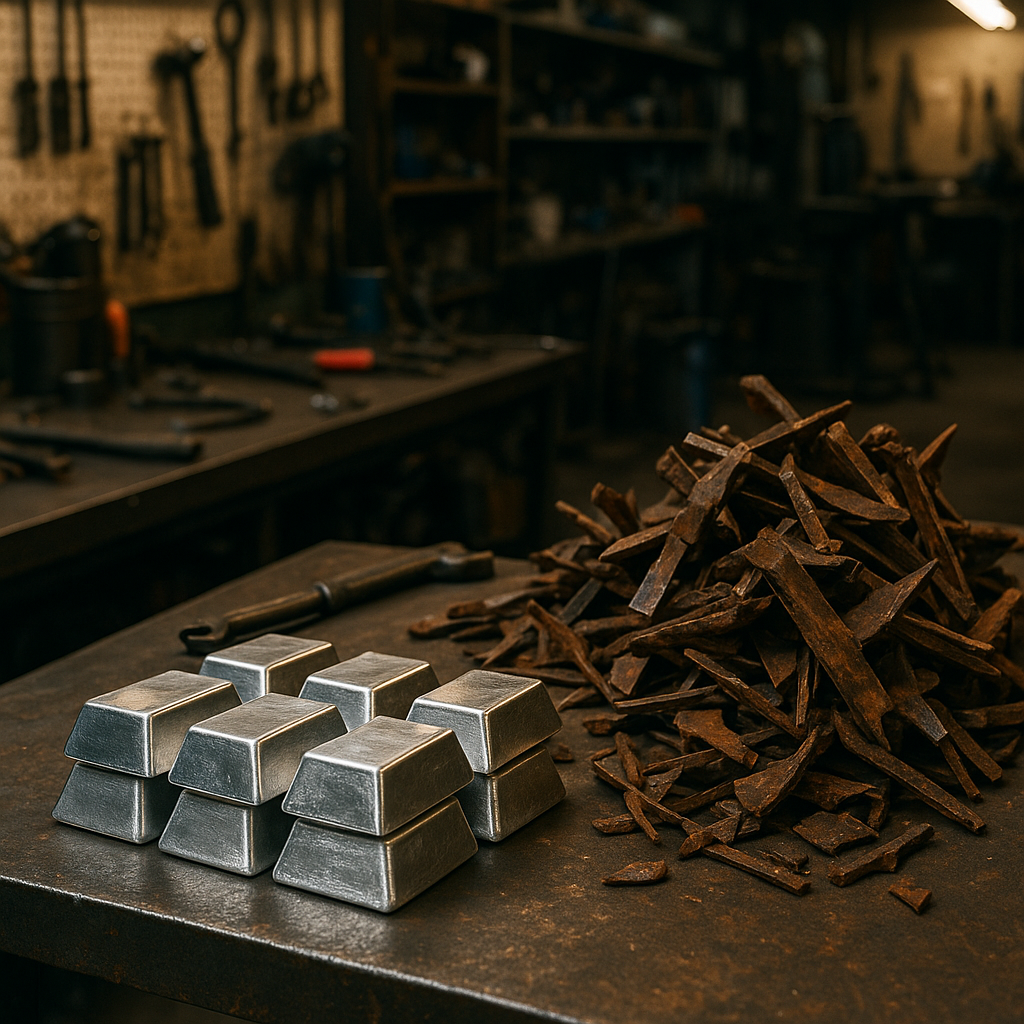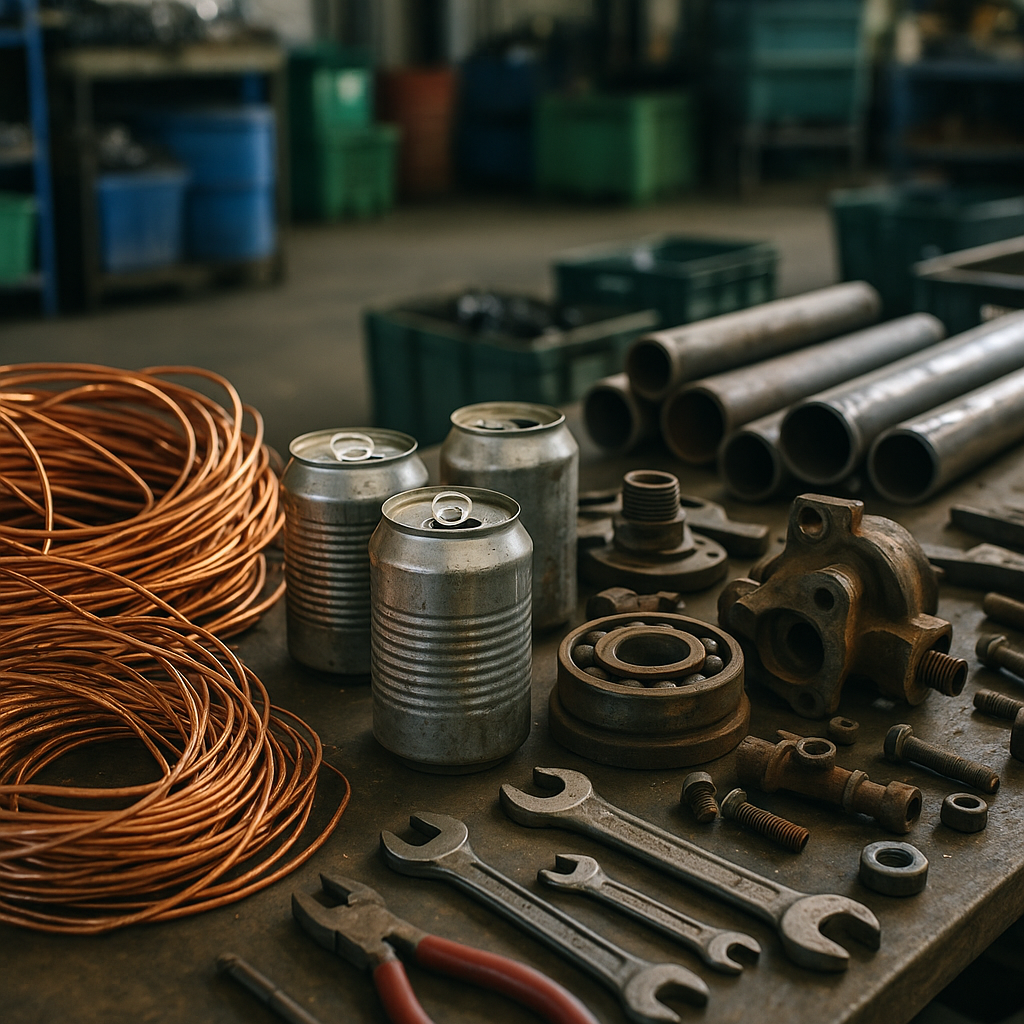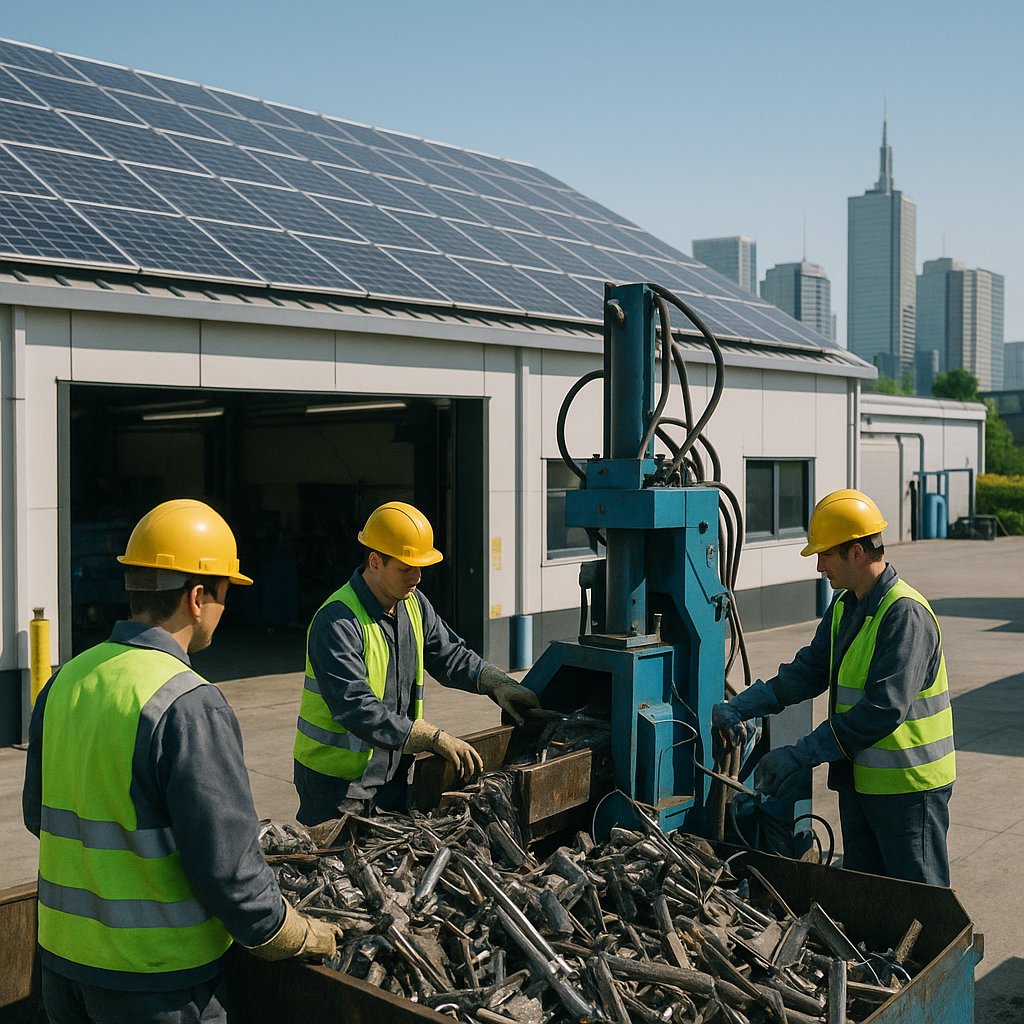5901 Botham Jean Blvd, Dallas, TX 75215
Thermal Treatment of Scrap Metal: Process, Benefits, and Emerging Recycling Technologies
September 30, 2025Did you know that thermal plasma technology can reach temperatures up to 15,000°C? That’s nearly three times hotter than the sun’s surface. This extreme heat is fundamental to the thermal treatment used in scrap metal recovery.
Thermal treatment of scrap metal is a sophisticated recycling process that uses intense heat to transform complex metal waste into valuable resources. This method excels in handling contaminated or mixed metal waste that conventional recycling technologies struggle to process effectively. The extreme temperatures break down the molecular structure of metals, allowing for precise separation and recovery.
The process works by subjecting scrap metal to a thermal plasma environment. When metal waste enters this superheated zone, it transforms into simpler forms. Complex compounds separate, impurities burn away, and valuable metals can be extracted with remarkable purity. This technology is particularly effective for recovering metals from electronic waste, industrial byproducts, and other difficult-to-process materials.
How Does the Thermal Treatment Process Work?

The thermal treatment process in metal recycling transforms scrap metals into reusable materials through controlled heating and separation. This process consists of several distinct steps that allow for efficient recovery of valuable metals.
Step 1: Segregation and Preparation of Scrap Metal
Before thermal treatment begins, scrap metal undergoes thorough preparation. Workers sort metals by type and remove contaminants such as dirt, oil, paint, and other materials that might affect quality. The metal is then shredded or cut into smaller pieces to ensure uniform heating and efficient processing.
Step 2: Heating in the Plasma Furnace
The prepared scrap enters a specialized plasma furnace where it’s exposed to temperatures that can exceed 1,500°C (2,500°F). Unlike conventional furnaces, plasma furnaces use electrically charged gas (plasma) to generate intense heat. This extreme temperature environment quickly brings metals to their melting points without relying on combustion fuels.
Step 3: Melting and Separation of Metal Components
As the intense heat transforms metals into their molten state, a natural separation occurs. Different metals have unique melting points and densities, allowing them to separate into layers. For example, aluminum melts at around 660°C, while steel requires approximately 1,370°C. The plasma’s controlled environment prevents oxidation and helps manage the chemical composition of the molten metals.
Step 4: Collection of Purified Metals and Slag
Once separation occurs, the purified metals are collected through tapping processes. Any non-metallic materials form a layer called slag that floats on top of the molten metal. This slag, containing various oxides and impurities, is removed separately. The purified metals are then cooled and solidified into forms suitable for further processing, such as ingots, bars, or billets.
Types of Plasma Arc Systems
The thermal treatment process employs different plasma arc systems based on specific applications and material types:
Transferred arc plasma systems direct the electric arc from an electrode to the metal itself, making the metal part of the electrical circuit. This creates extremely high temperatures directly in the material.
Nontransferred arc plasma systems contain the arc entirely within the torch, heating the plasma gas, which then transfers heat to the metals. This method provides more controlled, indirect heating.
Extended arc plasma systems combine elements of both methods for specialized applications that require precise temperature control across larger areas.
Each system offers distinct advantages depending on the metals being processed and the desired outcome of the recycling operation.
What Are the Benefits of Thermal Treatment for Scrap Metal?

Thermal treatment is a highly effective method for recycling complex scrap metal materials. This process uses controlled high temperatures to transform metal waste that might otherwise be difficult to process through conventional recycling techniques. The benefits extend far beyond simple metal recovery, offering significant environmental and economic advantages.
Studies from recycling facilities show thermal treatment can achieve higher recycling yields than other methods. According to research published in the Journal of Sustainable Metallurgy, thermal treatment at 550°C provides better recycling yields than lower-temperature treatments, making it particularly valuable for processing contaminated metal waste that contains organic residues, coatings, or other non-metallic components.
Thermal treatment offers several key advantages for recycling scrap metal:
- Processes complex and contaminated metal waste – Thermal treatment can handle metals with organic residues, paint, coatings, and other contaminants that might render them unsuitable for conventional recycling. This capability significantly expands the range of recyclable materials, diverting more waste from landfills.
- Improves environmental performance – Unlike traditional methods that may produce significant amounts of hazardous waste, thermal treatment can destroy harmful organic compounds through controlled high-temperature processing. This results in cleaner end products and reduces the overall environmental footprint of metal recycling.
- Conserves valuable resources – By efficiently separating and recovering metals from complex waste streams, thermal treatment contributes to resource conservation. This reduces the need for environmentally damaging mining operations while preserving finite metal resources.
- Enhances metal quality – Research shows that pre-treatment at 550°C not only increases yield but also improves the quality of recycled metal by reducing oxide films. This results in higher-grade recycled materials suitable for more demanding applications.
- Reduces energy consumption – While thermal treatment itself requires energy, it consumes significantly less energy than extracting and refining virgin metals from ore. According to industry data, recycling aluminum through thermal treatment saves up to 95% of the energy needed to produce new aluminum from raw materials.
The effectiveness of thermal treatment varies based on the type of scrap metal being processed. For example, aluminum packaging with food residue shows better recycling results when treated at 550°C compared to lower temperatures. The higher temperature effectively removes contaminants while preserving the metal’s integrity, resulting in both better yield and quality.
As waste management regulations become more stringent, thermal treatment offers a compliant solution that addresses both environmental concerns and resource recovery goals. For municipalities and businesses looking to maximize the value of their metal waste streams while minimizing environmental impact, thermal treatment represents an increasingly important recycling technology.
What Types of Scrap Metal Can Be Treated Thermally?

Thermal treatment technologies offer effective solutions for processing a diverse range of metal-containing materials that might otherwise be difficult to recycle using conventional methods. These advanced processes utilize high-temperature plasma systems reaching up to 15,000°C, enabling the separation and recovery of valuable metals from complex waste streams.
Electronic Waste (E-waste)
E-waste represents a significant opportunity for thermal metal recovery. Printed circuit boards (PCBs) contain numerous valuable metals, including copper, gold, silver, palladium, and tin. Thermal plasma processing of PCBs can achieve metal recovery rates of up to 76% while breaking down hazardous organic compounds.
Common e-waste items suitable for thermal treatment include:
- Motherboards and graphics cards from computers
- Mobile phones and tablets
- Television circuit boards
- Server and telecommunications equipment
Industrial By-products
Various industrial processes generate metal-rich residues that can be thermally treated for metal recovery. Red mud, a by-product of aluminum production, contains 30-50% iron along with other metals. By using DC extended arc plasma technology, recovery rates of up to 71% iron can be achieved from red mud in optimized conditions.
Other treatable industrial by-products include:
- Electric arc furnace (EAF) dust from steel production
- Aluminum dross from aluminum manufacturing
- Metallurgical slag containing residual metals
- Spent catalysts from chemical and petroleum industries
Contaminated Metal Scrap
Metal scrap contaminated with oils, coatings, or other organic materials presents unique recycling challenges. Thermal plasma treatment effectively separates these contaminants from valuable metals. The high temperature converts organic pollutants into simpler compounds or syngas while recovering the metal content.
Examples include:
- Oil-contaminated machine parts
- Paint-coated automotive components
- Plastic-metal composites from consumer products
- Cable and wire with plastic insulation
Complex Alloys and Mixed Metal Waste
Thermal plasma systems excel at processing mixed metal waste and complex alloys that traditional recycling methods struggle with. The high-temperature environment enables the separation of metals with different melting points and properties.
This category encompasses:
- Automotive parts containing multiple metal types
- Specialized machinery components with complex compositions
- Metallic assemblies with various joining methods
- Galvanized or plated metal products
Precious Metal-Containing Waste
Waste streams containing low concentrations of precious metals are particularly valuable candidates for thermal treatment. The plasma process can concentrate these metals for subsequent recovery, making otherwise uneconomical materials viable for recycling.
Sources of precious metal-bearing waste include:
- Industrial catalysts containing platinum group metals
- Jewelry manufacturing scrap
- Medical devices with noble metal components
- Specialized electronic components with gold or silver
The efficiency of thermal treatment varies depending on the specific waste composition and process parameters. The technology facilitates the recovery of metals suitable for reintroduction into manufacturing, supporting the circular economy while reducing environmental impacts from mining and waste disposal.
Conclusion: The Future of Scrap Metal Recycling

Thermal treatment of scrap metal represents a significant advancement in recycling technology. This process offers a sustainable solution for recovering valuable metals from complex waste streams at a critical time. As global demand rises and traditional metal sources become scarcer, these innovative methods provide an environmentally responsible alternative to conventional mining.
While thermal and plasma technologies currently face challenges regarding energy consumption and operational scale, ongoing research continues to enhance their efficiency. The industry is on the brink of transformation through advanced thermal processes that can extract high-purity metals from previously unrecoverable sources. For your sustainable metal recycling and recovery needs, contact Okon Recycling at 214-717-4083.
